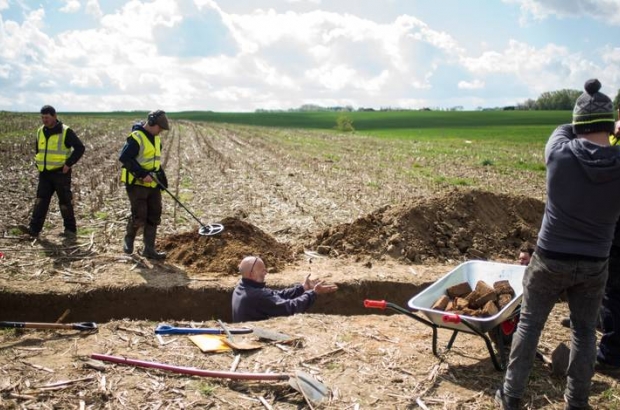- Daily & Weekly newsletters
- Buy & download The Bulletin
- Comment on our articles
Waterloo: 2015 soldiers hunt for 1815 soldiers
A team of 20 people comprising Belgian and British archaeologists and British soldiers have been working since Monday on "the first serious archaelogical digs" to be conducted on the battlefields of Waterloo since the great battle took place.
Work first started in earnest a few weeks ago when Marc Van Meirvenne of the University of Ghent arrived on the battlefields with a machine specially designed to locate areas of interest to research without digging up the entire site. "We particularly didn’t want to damage any agricultural land," said archaelogist for Wallonia, Dominique Bosquet. "The Waterloo site isn’t just a battlefield, it is a living site."
Thanks to elecrical sensors on Mervienne’s machine, the Ghent team were able to map out in three days 10 hectares of sub-soil around the Hougoumont farm. Some sediments are still very sensitive magnetically: burnt earth, bricks, metallic objects. The battlefield’s soil still contains, inspite of illegal searches by amateur metal detectors, bullets, uniform buttons and traces of pyres where the bodies of dead soldiers were burnt.
A series of trenches to be dug have been determined as a result of the electromagnetic search. "We know a lot about the movements of the Battle of Waterloo but we know far less about what the soil holds," said historian Alasdair White, who specialises in the Battle of Waterloo. "For example, if we can prove that there was a duck pond in front of the farm, that would explain why the French didn’t attack the hill." At the end of the digs, it is hoped that it will be possible to map out the entire Waterloo countryside as it was when the battle took place.














